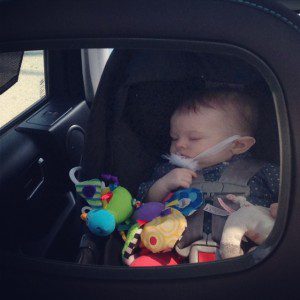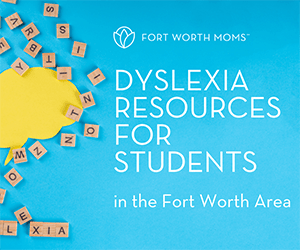As a toddler mom, I LIVE for nap-time each day. After dealing with milk spills, epic tantrums, and super smelly diapers, it is the time each day that I have EARNED. Time for me to work, eat, sleep, or catch up on this week’s episode of Parenthood (which, don’t get me started on that season finale). A bad nap day is a guaranteed trip to insert indulgence of choice {mine usually vacillate between Chick Fil A, Sonic, and Curly’s}, and a few text messages with varying emoticons to my spouse.
Our Sleep History
At the beginning of our little lady’s life, I was sleep obsessed. I have so many books lining my shelves–it’s actually a little embarrassing. But when a firstborn baby is born to a Type A+ mama, and said baby struggles with sleep, you will spend any amount of time and money on books promising just a little relief. I could write an entirely different post on sleeping training and all the books I read, but we’ll save that for another day.
The transition from three to two naps wasn’t too tricky, thanks in large part to the snugabunny swing. Our sweet pea’s late afternoon nap almost always happened in the swing. So when she was ready to lose it, she simply stopped sleeping when we put her in it, but continued to rock quietly back and forth.
The one bit of advice I learned through all my study, trial, and error is this: Keep calm, Mama, and be patient with those littles. The title suggests finite transitions for naps, but let’s get real. Naps are constantly shifting, and just when you think you have mastered one schedule, they change it up on you. Thankfully, all the lost days of stressing and worrying helped to prepare me to be way a little more relaxed for the move from two to one.
The Signs
Most of the popular literature will tell you that little ones are ready to move to one nap anywhere from 15 to 18 months old. So when our little girl started getting crazy on her afternoon nap at 11 months, I put my foot down and said NO WAY. Six months shy of the window was simply not acceptable. In our case, we were also going through a move to a new home and a week of travel and sleep in a pack-in-play, so I just assumed she was responding to all the other things going on in her world. But our little girl had plans of her own.
 It all started with the afternoon nap. Little lady was rocking her morning nap (which usually occurred sometime between 10-10:30 a.m.), and even started to sleep in excess of two hours at times (this occurred very rarely before). Then she would completely refuse her afternoon nap. No sleep whatsoever. At first, I thought I might lose it. Any type-A mama knows that nap times are carefully scheduled. Morning nap = shower, a little work, an extra cup of coffee. Afternoon nap = sleep or TV show (or, in my case, a combination of the two). So when my afternoon nap started to be overtaken, I was NOT a happy camper. Fortunately, she would usually wiggle around the crib and just talk to herself and her wubbanubs until she was ready for me to come in, usually 45-60 minutes after going down. The unfortunate part was making it to bedtime. These evenings were brutal.
It all started with the afternoon nap. Little lady was rocking her morning nap (which usually occurred sometime between 10-10:30 a.m.), and even started to sleep in excess of two hours at times (this occurred very rarely before). Then she would completely refuse her afternoon nap. No sleep whatsoever. At first, I thought I might lose it. Any type-A mama knows that nap times are carefully scheduled. Morning nap = shower, a little work, an extra cup of coffee. Afternoon nap = sleep or TV show (or, in my case, a combination of the two). So when my afternoon nap started to be overtaken, I was NOT a happy camper. Fortunately, she would usually wiggle around the crib and just talk to herself and her wubbanubs until she was ready for me to come in, usually 45-60 minutes after going down. The unfortunate part was making it to bedtime. These evenings were brutal.
How We Transitioned
A week shy of her first birthday, I decided to commit to one nap. The biggest piece of advice I can give when transitioning from two to one nap is to stay committed to your decision. It will most likely not be swift or easy. It takes slow and steady movements. Your child may be showing signs of being ready to go down to one nap, but this does not mean he/she will make the move overnight. It will require a little give and take, and a great deal of patience. There were many moments I wanted to (and tried) to put our little girl back on a two nap schedule, as I was convinced her poor response to one nap meant she wasn’t ready. She was, I just needed to be patient.
 For us, it started by moving our naps from 10:30 to 11:30. I had to be careful to a) have snacks in the morning to keep her happy and occupied, and b) try not to have a long drive just before nap time to avoid her falling asleep in the car, and c) break-up lunch into two smaller meals before and after her nap (though I don’t really agree with the concept that babies with full tummies sleep better. Again, another post for another day). At first, it was hard. She would nearly fall asleep in her high chair, and the longest nap I would get would be 1.5 hours. This meant we were up by 1 p.m., and had to make it until 7 for bed. Rough. At most we would move bedtime up 30 minutes, but feel free to temporarily put your toddler to bed early to avoid an overtired child.
For us, it started by moving our naps from 10:30 to 11:30. I had to be careful to a) have snacks in the morning to keep her happy and occupied, and b) try not to have a long drive just before nap time to avoid her falling asleep in the car, and c) break-up lunch into two smaller meals before and after her nap (though I don’t really agree with the concept that babies with full tummies sleep better. Again, another post for another day). At first, it was hard. She would nearly fall asleep in her high chair, and the longest nap I would get would be 1.5 hours. This meant we were up by 1 p.m., and had to make it until 7 for bed. Rough. At most we would move bedtime up 30 minutes, but feel free to temporarily put your toddler to bed early to avoid an overtired child.
Luckily, at this stage of life little ones are easily distracted, and most afternoons I made sure (and still do, for that matter) to get us out of the house with plenty of snacks and find some entertainment, be it zoo, FWMSH, the park, routine errands, or a fun play date with friends. Full disclosure: it took our little one about a month to figure out that she could extend her nap from 1-1.5 hours to now taking a 2+ hour nap (about once a week I get 3 hours!). She is now 14 months old, and I have managed to extend her to 12:30 p.m. before putting her down. I imagine that she will be able to wait until 1 p.m. within a few months.
When naps go wrong, days are long. No two days are ever the same, so be patient with your little one and trust your instincts. Popular literature would say my little one was too young when we moved her to one nap, but my gut (and our day-to-day routine) told me otherwise.
Life has become so much easier since we moved to one nap. We are now able to consolidate our activities. A morning can be filled with errands, play dates, and lunch with friends without worrying about a baby who refuses to sleep on the go. Longer naps means plenty of time for this mama to work, do some house chores, and rest. The road felt long, but in the end it has been fabulous!
How has your family handled nap transitions?














